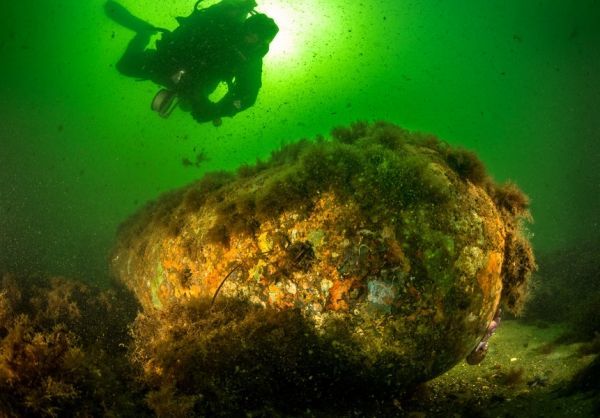More than 70 years after the end of the Second World War, countless pieces of ammunition from this time are still lying – and corroding – in all oceans. Once the casings are damaged, the explosives can release toxic substances into the seawater. A new review study, published by scientists from the GEOMAR Helmholtz Centre for Ocean Research Kiel and the Schleswig-Holstein Ministry of the Environment in the journal Frontiers in Marine Science, points to considerable knowledge gaps regarding the spread and effects of these chemicals on marine ecosystems.
The coastal Baltic and North Seas are widely littered with over a million tons of intact and corroding munitions, relict from wars since the early 1900s. Sea mines, aerial bombs, torpedo heads, grenades, and ammunition are all commonly found, some in piles on the seafloor where they were intentionally dumped after the wars, and others scattered throughout from use during wartime.
A new review paper published in the international journal Frontiers in Marine Science describes the scope of the underwater munitions problem not only as a northern European matter, but as a global problem. “In fact, coastal regions of nearly every continent are impacted by underwater munitions”, says lead author Dr Aaron Beck of the GEOMAR Helmholtz Centre for Ocean Research Kiel
For the study, Dr Beck and his co-authors from GEOMAR and the Schleswig-Holstein Ministry of Energy, Agriculture, the Environment, Nature and Digitalization have summarized what is known about the biogeochemical behavior and ecological impact of munitions-related chemicals in the marine environment. It has been realized in association with the GEOMAR-led BMBF research project UDEMM: Umweltmonitoring für die DElaboration von Munition im Meer (Environmental monitoring for the delaboration of munitions on the seabed), which includes partners from Kiel University, the Leibniz Institute for Baltic Sea Research Warnemünde, and the Initiative "Sea our Future" of the federal state Schleswig-Holstein.
Read more at Helmholtz Centre for Ocean Research Kiel (GEOMAR)
Image: A scientific diver investigates old ammunition in the Baltic Sea. (Credit: Christian Howe, www.h2owe.de)


